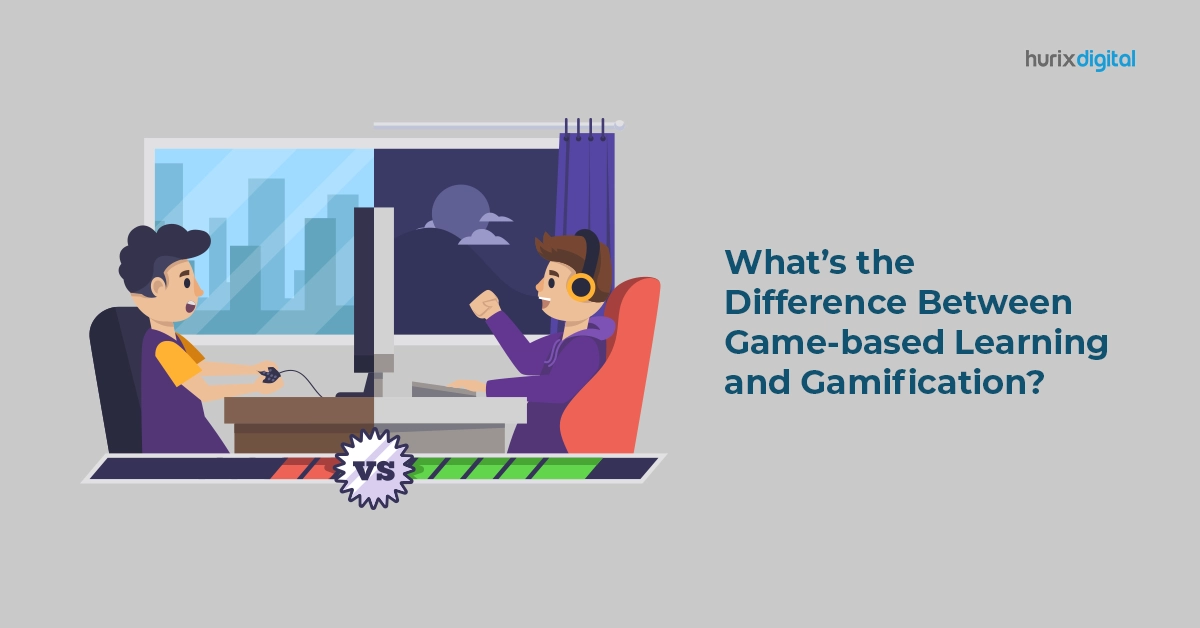Training is an indispensable part of every organization. The most common grievance that employees have regarding training is that it is uninteresting. Gamification introduces elements of gaming into online training to make it more exciting, engaging, and interesting. Developing gamified content is an art that yields exceptionally good results.
Tips to deliver gamified content to learners:
1. Add a Story to the Game
2. Use Levels, Leaderboards & Badges
3. Breakdown Complicated Content Into Smaller Pieces
4. Evaluate Every Step
5. Add Visual Appeal
6. Introduce Team Challenges
7. Be Innovative
8. Give Regular Feedback
9. Offer Real-Life Rewards
10. Update the Content Continuously
Do you remember how in school the teacher would ask everyone to solve a problem and you’d have to put your hand up when you were done? The first person to solve correctly would be rewarded in some way. It created a competitive environment and pushed all the students to put in their best effort to finish first. It made learning fun and exciting.
This is exactly what you can expect from gamified content for training. Has this got you wondering how you can implement gamification in your organization’s training program?
Read more: How and Why AI Videos are a Gamechanger in the Corporate World?
Here are a few tips to help you deliver gamified content to your learners:
1. Add a Story to the Game
Research shows that students learn better and retain more information when it is presented as part of a story. Ever wonder why your child knows the intricate details of their video game like the back of their hand? It is because it is presented as an interesting story.
You need to do the same with your corporate training content. Introduce a story. As the employee progresses in the training, the story also progresses and reveals new details, tasks, rewards, and challenges.
2. Use Levels, Leaderboards & Badges
How do the trainees know how well they are performing? How do they fare in comparison with others? This is where levels, leaderboards and badges come into the picture. Levels tell the employee how far they have come and how much they have learned.
Leaderboards tell the employees how they are progressing compared to their peers. Leaderboards introduce competition in training and push the employees to do better.
Badges can be awarded for completing special tasks, or finishing a certain number of evaluations with the perfect score, or clearing certain levels in a set amount of time.
3. Breakdown Complicated Content Into Smaller Pieces
Typical training videos are long and tend to pack in a lot of information. You need to undo this for gamifying the content effectively. Try to break down large videos into smaller ones, logically and systematically.
Each of the smaller ones should have small rewards for completion. Although you can offer a bigger reward for finishing all the small lessons that are part of a particularly complicated aspect of the training.
The smaller chunks are easier for the employees to consume and grasp while the rewards, both big and small, keep them going.
4. Evaluate Every Step
Evaluations tell each employee how well they have understood the training content. If you skip this step, then the employee has no way of knowing if they have really understood the concepts. It can lead to problems at a later stage when they need to use this knowledge in their work. They also tell you how many of your employees have successfully cleared each part of the training.
5. Add Visual Appeal
It is not enough to just tell the story. Your employees should be able to relate to it visually. You should make the game look as real as you can with the help of graphics.
Employees will be more interested in using the gamified content if it is presented in a visually appealing manner.
6. Introduce Team Challenges
Learning works better when it is done as a team. Collaboration within the team is paramount in any enterprise. You can use gamified content in training to improve the relationships within the team.
While most of the learning objectives are individual, you should also introduce challenges where the whole team needs to work together to clear a particular level. Doing so fosters communication and collaboration within the team. It makes learning a collective effort. If a particular team member is having difficulty with a concept, then it becomes the team’s responsibility to help them understand the material and clear the level.
7. Be Innovative
The whole objective of presenting gamified content for training is to make learning more exciting. You should be innovative in your game design to inspire the employees to participate wholeheartedly. For example, if your story involves searching for a treasure, then a character can appear on the screen and attack the user’s avatar when they get something wrong.
You can even go a step further and introduce virtual reality in training. It can be particularly useful if you need to provide hands-on training.
8. Give Regular Feedback
Your employees need to know how well they have learned the concepts. Feedback is invaluable in the learning process; points, levels, and badges can only go so far, try to give personalized feedback to the employees regarding their training. The feedback will guide them better and help them improve on their problem areas.
9. Offer Real-Life Rewards
While there are many in-game rewards for completing each aspect of the training, real-life rewards are better motivators. Offer a certificate upon completion of the training or a trophy for the trainee with the best score.
The real-life reward can also be something related to work. For example, the employee who gets the top score in the training of a new office tool can be the first one to use the tool.
10. Update the Content Continuously
Training content needs to be updated regularly. If there is a certain aspect of the training that a lot of the employees have trouble understanding, then it is advisable to make the content easier to understand by either dividing it into smaller chunks or presenting it in a simple manner.
Another reason for updating the content is if it has become outdated. If a certain process has undergone a change, then it should be reflected in the gamified content as well.
Also read: How Game Based Learning Solutions Raise Productivity and Drive Business Growth
Revamp Your Training with Gamification
Gamification is the most innovative and effective method to impart essential training to your employees. Every enterprise must consider introducing gamified content in their training. It may require some effort at the beginning, but the end result is truly worth the effort.
If you want to create gamified content that keeps your employees engaged and improves their learning experience, drop us a note at marketing@hurix.com.











